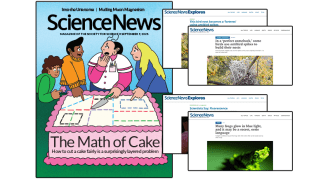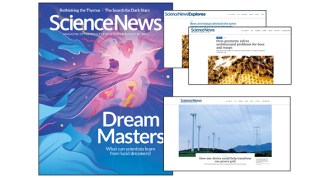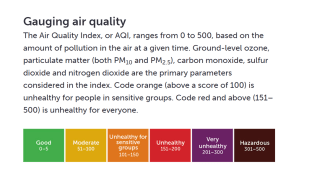Search Results
Paint a clearer picture with AI
Artificial intelligence, or AI, provides a new way to focus a camera’s lens! Researchers have now used AI to overcome limitations in thermal-imaging technology — and they didn’t stop there. Learn how applying this AI to existing technology, such as self-driving cars, might solve safety problems and help transform what had been science fiction into reality. Apply knowledge to new applications and answer questions that confront the nuance sometimes lost by dichotomies as literary devices.
Planning a Garden Plot
Gardens have many functions ranging from vegetable and fruit production to flood mitigation and erosion control. Gardens also can be a haven for pollinators and a repository for native plants. Over the course of a year, students will design a garden for their school or a community organization using scientific concepts they learn in class.

Bird Behavior and Fluorescing Frogs
Use recent news articles from the September 9 Science News issue to have students evaluate hypotheses made by scientists based on evidence gathered about defensive bird behaviors and to light up your class with applications of light and atomic structure in newly identified fluorescing frogs.
Fluorescing frogs
Light up your class with examples of fluorescence, including recently found biofluorescence in many frog species. Learn about the discovery of fluorescing frogs, discuss the potential evolutionary advantages of fluorescence, answer questions about the chemistry behind fluorescence and perform a demonstration of fluorescence from common objects.
A ‘Perfect Comeback’
In a “perfect comeback” move, birds may be fortifying their nests with anti-bird spikes plucked from rooftops and eaves. Learn about the new findings and foster healthy skepticism by inviting students to evaluate evidence used in the article to support claims.

Geometric Hives and Renewable Energy Sources
Check out lesson plans paired to recent news articles from the August 26 Science News issue covering how bees and other hive-makers have evolved with efficient hive geometry to accommodate changes in their colony’s needs and the progress and major challenges the U.S. is facing as it transitions away from coal-fired power plants to renewable […]
Syncing the power grid to renewable energy
How is the U.S. doing in its transition away from coal-fired power plants to renewable energy sources? Analyze state and national data to learn about the transition and one of the major challenges: keeping the grid stable as large power plants shut down.
Bee Geometry
How clever! Bees use geometry tricks to make the most of their hive’s space. Learn how bees, wasps and other hive-makers accommodate changes in their colony’s needs, answer questions about evolution’s approach to problem-solving and discuss the strengths and weaknesses of analogies as literary devices.

Health Effects of Climate Extremes and Thermal Technology
Climate extremes are impacting human health and inspiring new technology. This guide provides lesson plans paired to recent news articles covering a new thermal fabric prototype and its ability to regulate temperature and how wildfire smoke impacts the air quality index and human health.
Keep up with your air quality
Air pollution and wildfire smoke are affecting many areas of the country. Check your air quality index and learn how poor air quality could impact your health with this quick activity!
Not too hot. Not too cold
Staying cool in the summer and keeping warm in the winter may
become easier. Learn about a new thermal fabric prototype and its ability to regulate temperature,
answer questions about its design and function and discuss potential applications.
How Erosion Alters the Landscape
When wind and water move, they don’t move alone — they take parts of the land with them. In this activity, students will investigate how water carries sediments from one location to another via erosion and will explore how this natural process can alter the landscape.